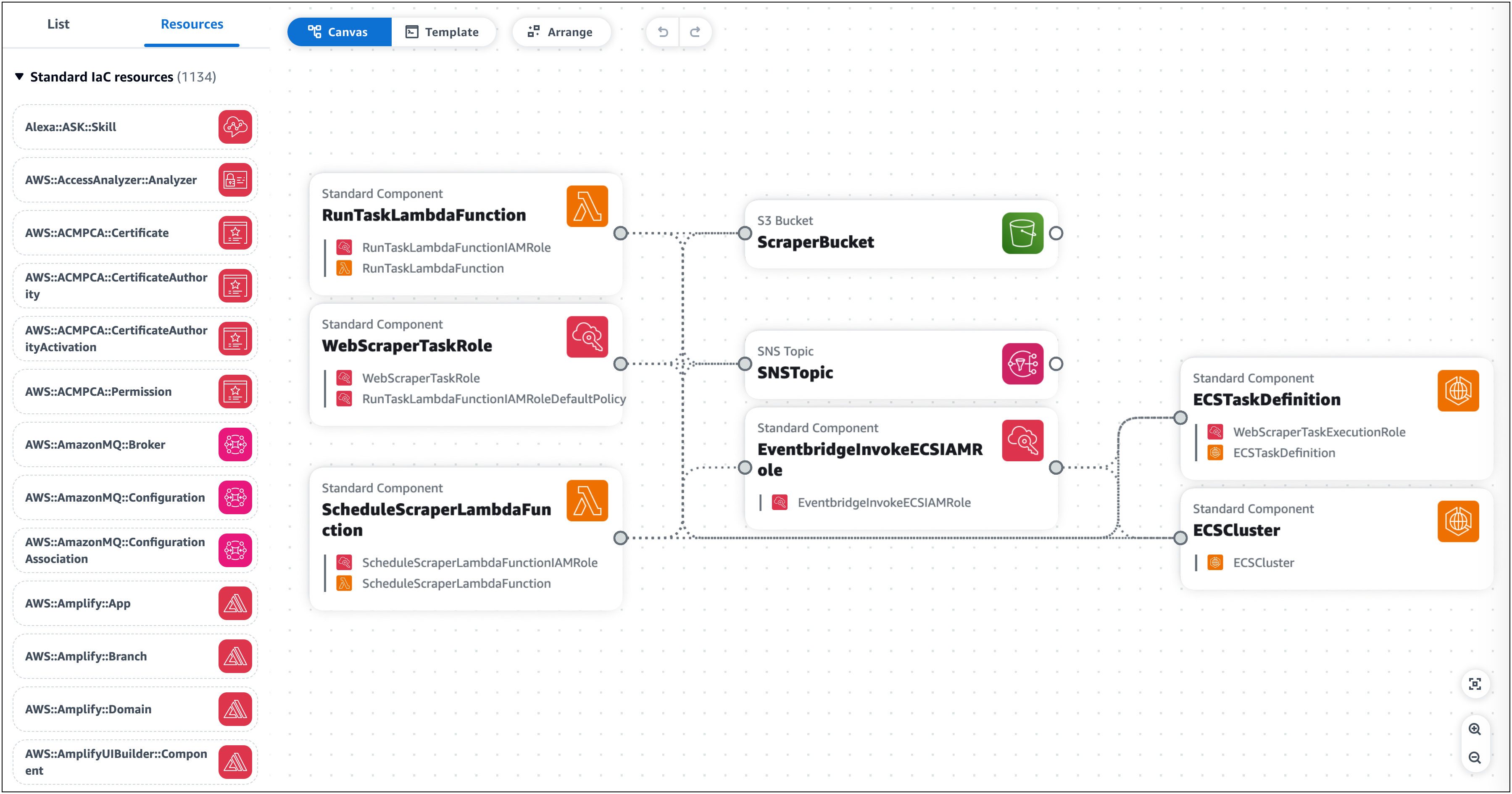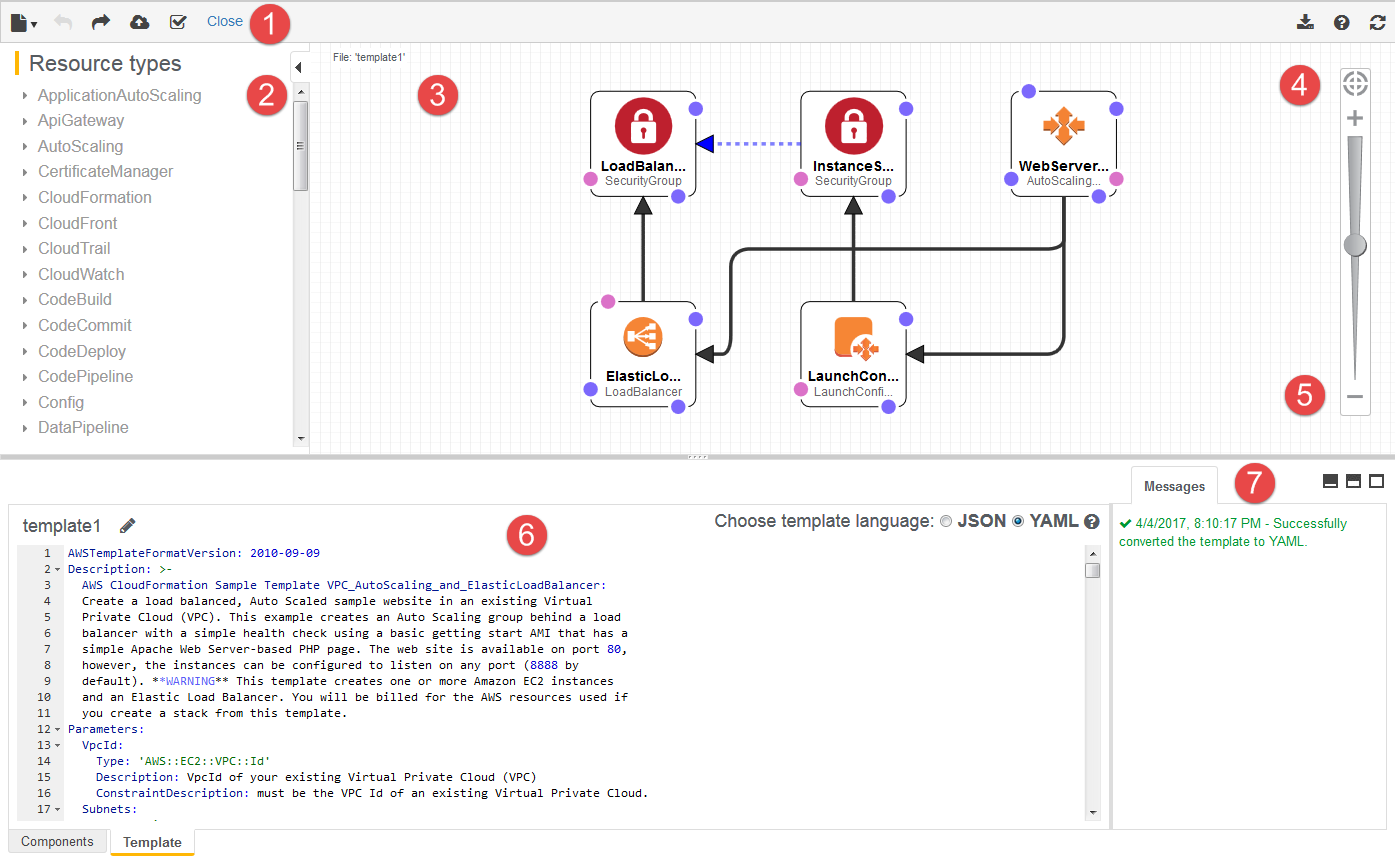AWS announced the availability of all AWS CloudFormation resource types within AWS Application Composer. This builds on the GA release which only allowed 13 CloudFormation resource types to be used.
CloudFormation is a toolchain for modeling and provisioning infrastructure as code. Resources, which could be instances of services such as AWS Lambda Functions or AWS S3 Buckets, are expressed as groups of key-value pairs within JSON or YAML files and then deployed via the CloudFormation Service using the AWS CLI, AWS SDKs or AWS Console. Resources within a single file make up a CloudFormation Template and are deployed as a CloudFormation Stack.
Application Composer is a visual builder for CloudFormation Templates. Released in December 2022, it is accessed as a drag-and-drop canvas on the AWS Console and integrates AWS best practices into the configuration of any added resources. From Application Composer, users are able to automatically generate the CloudFormation Templates associated with their design and deploy it via their existing workflows.

An example of a serverless application on the Application Composer canvas (Source: AWS News Blog Post)
With its initial release, Application Composer was focused on components for serverless applications and as a result only included a small subset of CloudFormation resources such as Lambda, S3, SQS, API Gateway & DynamoDB. The new release enables all CloudFormation resource types to be used within Application Composer and provides enhanced configuration options for the 13 resources enabled with the service’s initial release.

A view of the Application Composer Canvas including cards for newly available services (Source: Application Composer Developer Guide)
The use of visualizations to generate CloudFormation templates is not new. AWS previously launched CloudFormation Designer, a drag-and drop tool with support for all CloudFormation resources, but the tool did not include any best practices in the synthesized code. Comparing both tools after Application Composer’s GA release, Tim Anderson of Devclass wrote:
Unlike Application Composer, the Designer tool does not try to simplify the configuration of services . . . it does raise the question of why AWS chose to create a new tool . . the company may have wanted the sharp focus on serverless rather than more general applications.
With Application Composer’s expanded offering to all resource types, the use cases for CloudFormation Designer appear to be fewer.

A view of the CloudFormation Designer canvas (Source: CloudFormation Designer Documentation Page)
Outside of the AWS Ecosystem, one of the major tools for visualizing and generating Infrastructure as Code is Brainboard. Brainboard has a drag-and-drop tool for designing infrastructure similar to Application Composer but generates Terraform code instead of CloudFormation templates. As Brainboard natively supports the Terraform AWS Provider, it is capable of generating similar architectures as Application Composer but differs in being able to deploy the resources as well.

A view of the Brainboard Design Area (Source: Brainboard User Guide)
Application Composer is available in AWS US, Asia Pacific, Canada and Europe regions. Further information can be found in the user guide.
